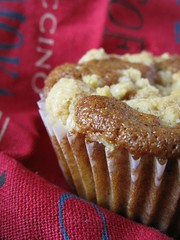To be honest, I once swore myself never to make gnocchi. It looked too complicated, and the prepared ones from the supermarked tasted well enough for me. Although I own the Jamie Oliver Cookbook where he explains how to make them I never thought I would even try. Well,
I guess it's how I ended up cooking risotto - you just do and find out it's not that complicated as you thought. I have to confess I skipped the testing-step completely - and I was lucky ... They turned out to be perfect! As for the sage I used as flavour I remembered a recipe I usally cook in autumn - filled sqash. I remembered I had some leftovers in the freezer, so I used them for the
sauce. The taste was incredible, and the texture was suprisingly fluffy - maybe there will be more home made gnocchi soon ...
Source: From The Zuni Café Cookbook.
makes 40 to 48 gnocchi (serves 4 to 6)
Prep time: 24 (draining) + 1 hour
Tips:
Do not skip the draining step. Even if the fresh ricotta doesn't look very wet, it is. Draining the ricotta will help your gnocchi tremendously.
When shaping your gnocchi, resist the urge to over handle them. It's okay if they look a bit wrinkled or if they're not perfectly smooth.
If you're not freezing the gnocchi for later, cook them as soon as you can. If you let them sit around too long they may become a bit sticky.
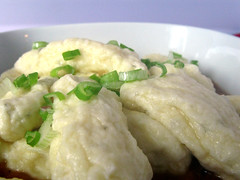 gnocchi:
gnocchi:
- 454 g fresh ricotta
- 2 large cold eggs, lightly beaten
- 1 tablespoon (1/2 ounce) unsalted butter
- 2 or 3 fresh sage leaves (I used 1 teaspoon dried)
- 60 g Parmigiano-Reggiano, grated
- about ¼ teaspoon salt
- all-purpose flour for forming the gnocchi
Preparing: If the ricotta is too wet, your gnocchi will not form properly. In her cookbook, Judy Rodgers recommends checking the ricotta's wetness. To test the ricotta, take a teaspoon or so and place it on a paper towel. If you notice a very large ring of dampness forming around the ricotta after a minute or so, then the ricotta is too wet. To remove some of the moisture, line a sieve with cheesecloth or paper towels and place the ricotta in the sieve. Cover it and let it drain for at least 8 hours and up to 24 hours in the refrigerator. Alternatively, you can wrap the ricotta carefully in cheesecloth (2 layers) and suspend it in your refrigerator for 8 to 24 hours with a bowl underneath to catch the water that's released. Either way, it's recommended that you do this step the day before you plan on making the gnocchi.
To make great gnocchi, the ricotta has to be fairly smooth. Place the drained ricotta in a large bowl and mash it as best as you can with a rubber spatula or a large spoon (it's best to use a utensil with some flexibility here). As you mash the ricotta, if you noticed that you can still see curds, then press the ricotta through a strainer to smooth it out as much as possible. Add the lightly beaten eggs to the mashed ricotta.Melt the tablespoon of butter. As it melts, add it to the ricotta mixture. Add in any flavouring that you're using. If you're not using any particular flavouring, that's fine. Add the Parmigiano-Reggiano and the salt. Beat all the ingredients together very well. You should end up with a soft and fluffy batter with no streaks (everything should be mixed in very well). In a large, shallow baking dish or on a sheet pan, make a bed of all-purpose flour that's1,5 cm deep. With a spatula, scrape the ricotta mixture away from the sides of the bowl and form a large mass in the centre of your bowl. Using a tablespoon, scoop up about 2 to 3 teaspoons of batter and then holding the spoon at an angle, use your finger tip to gently push the ball of dough from the spoon into the bed of flour. At this point you can either shake the dish or pan gently to ensure that the flour covers the gnocchi or use your fingers to very gently dust the gnocchi with flour. Gently pick up the gnocchi and cradle it in your hand rolling it to form it in an oval as best as you can, at no point should you squeeze it. What you're looking for is an oval lump of sorts that's dusted in flour and plump. Fill a small pot with water and bring to a boil. When it boils, salt the water generously and keep it at a simmer. You
will use this water to test the first gnocchi that you make to ensure that it holds together and that your gnocchi batter isn't too damp.Gently place your gnocchi in the simmering water. It will sink and then bob to the top. From the time that it bobs to the surface, you want to cook the gnocchi until it's just firm. This could take 3 to 5 minutes.
If your gnocchi begins to fall apart, this means that the ricotta cheese was probably still too wet. You can remedy this by beating a teaspoon of egg white into your gnocchi batter. If your gnocchi batter was fluffy but the sample comes out heavy, add a teaspoon of beaten egg to the batter and beat that in. Test a second gnocchi to ensure success.
Form the rest of your gnocchi. You can put 4 to 6 gnocchi in the bed of flour at a time. But don't overcrowd your bed of flour or you may damage your gnocchi as you coat them.Have a sheet pan ready to rest the formed gnocchi on. Line the sheet pan with wax or parchment paper and dust it with flour.You can cook the gnocchi right away, however, Judy Rodgers recommends storing them in the refrigerator for an hour prior to cooking to allow them to firm up.
In the largest pan or pot that you have (make sure it's wide), bring at least 2 liters of water to a boil. You need a wide pot or pan so that your gnocchi won't bump into each other and damage each other. Once the water is boiling, salt it generously. Drop the gnocchi into the water one by one. Once they float to the top, cook them for 3 to 5 minutes (as in the case with the test gnocchi).
Freezing the gnocchi: If you don't want to cook your gnocchi right away or if you don't want to cook all of them, you can make them and freeze them. Once they are formed and resting on the flour-dusted, lined tray, place them uncovered in the freezer. Leave them for several hours to freeze. Once frozen, place them in a plastic bag. Remove the air and seal the bag. Return to the freezer. To cook frozen gnocchi, remove them from the bag and place individually on a plate or on a tray. Place in the refrigerator to thaw completely. Cook as directed for fresh gnocchi.
For the gnocchi sauce (autumn style):
- about 250g of pumpkin puree (for example hokkaido)
- 2 chopped spring onion
- two big slices of ham, diced (in my case panchetta)
- two tablespoons of tomato puree
- 1/2 teaspoon chili powder, salt and pepper
Steam the ham, chili powder and the onions in olive oil until the onions become soft. Add the pumpkin and tomato puree and some water (or if you like wine) and let it simmer for about five minutes. Season with salt and pepper.
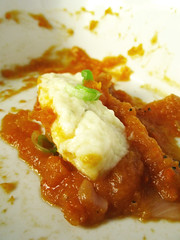

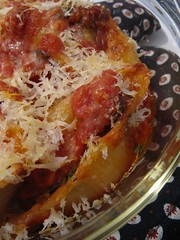


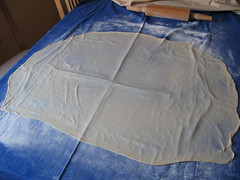
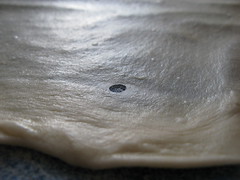
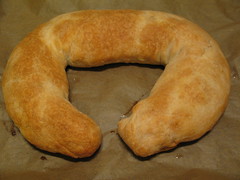 Bake the strudel for about 30 minutes or until it is deep golden brown. Cool for at least 30 minutes before slicing. Use a serrated knife and serve either warm or at room temperature. It is best on the day it is baked.
Bake the strudel for about 30 minutes or until it is deep golden brown. Cool for at least 30 minutes before slicing. Use a serrated knife and serve either warm or at room temperature. It is best on the day it is baked.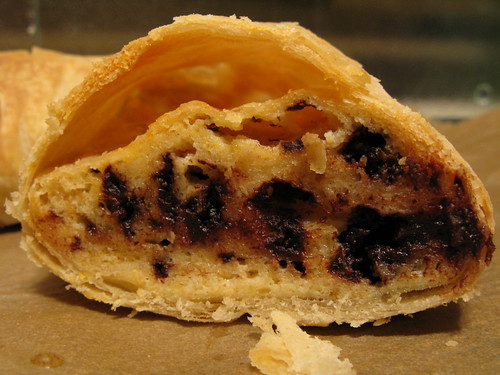
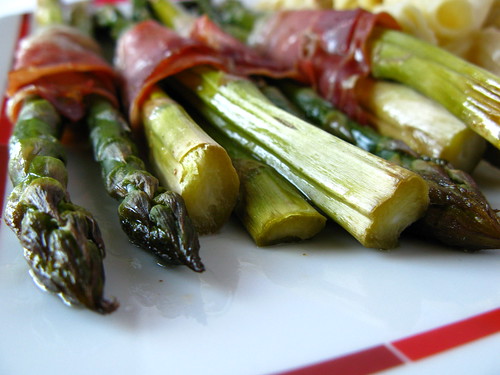
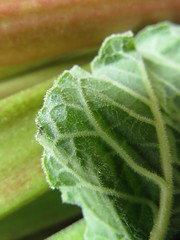 Rharbarber
Rharbarber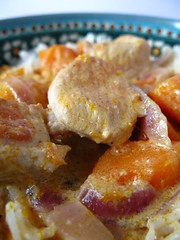

 gnocchi:
gnocchi: 


